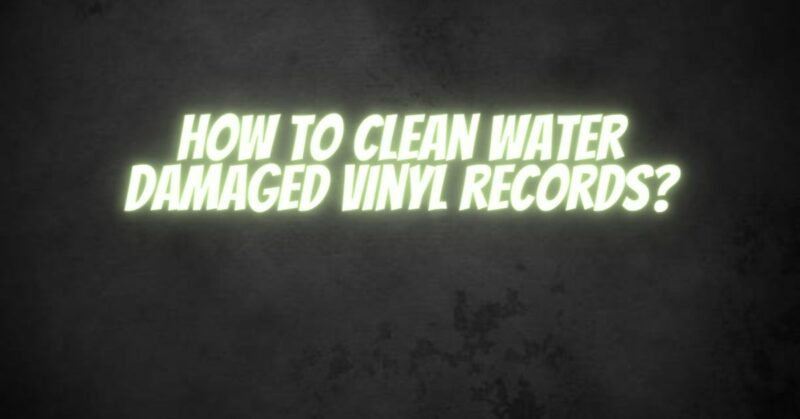Vinyl records are cherished by audiophiles and collectors alike for their warm, analog sound and timeless appeal. However, mishaps can occur, and water damage is one of the most common issues faced by vinyl enthusiasts. Whether it’s due to a flood, a leak, or accidental spillage, restoring water-damaged vinyl records requires care and attention to detail. In this article, we will guide you through the process of cleaning and salvaging your beloved vinyl collection, ensuring the music plays on.
Step 1: Assess the Damage:
Before diving into the cleaning process, it’s crucial to evaluate the extent of the water damage. Look for visible signs such as warping, mold growth, or dirt accumulation. If the record has suffered severe damage, it may be irreparable. However, if the damage is limited, the following steps can help salvage the record.
Step 2: Gather the Necessary Supplies:
To clean water-damaged vinyl records, you’ll need the following supplies:
1. Distilled Water: Free from impurities that could harm the vinyl.
2. Isopropyl Alcohol: Use a high-purity (at least 90%) isopropyl alcohol to remove dirt, mold, and mildew.
3. Soft lint-free cloths or microfiber brushes: These will help you gently clean the record.
4. Record cleaning brush: Designed specifically for vinyl, these brushes help remove dust and debris.
5. Vinyl record cleaning solution: Commercially available cleaning solutions are effective in removing stubborn dirt and stains. Ensure the solution is safe for vinyl records.
Step 3: Pre-Cleaning Preparations:
Take the following precautions before beginning the cleaning process:
1. Find a clean and well-ventilated workspace to prevent contamination.
2. Remove the record from its sleeve and carefully inspect both the vinyl and the inner sleeve for signs of mold or dirt.
3. Use a soft brush or compressed air to remove loose dirt and debris from the record’s surface.
Step 4: Cleaning the Water-Damaged Vinyl Record:
Follow these steps to clean the vinyl record effectively:
1. Fill a bowl or sink with distilled water. Avoid tap water as it may contain minerals and chemicals harmful to vinyl.
2. Add a small amount of mild dish soap to the water. This will help break down any grime or dirt.
3. Immerse the record in the soapy water, ensuring the water level does not exceed the label area.
4. Gently scrub the record’s surface using a soft cloth or a specialized record cleaning brush. Start from the center and work your way towards the outer edge in a circular motion.
5. Rinse the record thoroughly under running distilled water to remove any soap residue.
6. To remove mold or mildew, dampen a cloth with isopropyl alcohol and gently wipe the affected areas. Be cautious not to saturate the label or damage the record’s grooves.
7. Dry the record using a lint-free cloth. Pat it gently to remove excess moisture and allow it to air dry in a dust-free environment. Avoid direct sunlight or heat sources as they can warp the vinyl.
Step 5: Storing the Restored Record:
After cleaning, take preventive measures to ensure your record remains safe and pristine:
1. Place the record in a new anti-static inner sleeve to protect it from dust and scratches.
2. Store the record in a cool, dry place, away from direct sunlight and fluctuating temperatures.
3. Consider investing in a dehumidifier or moisture-absorbing packets to maintain an optimal environment for your collection.
Conclusion:
Water damage to vinyl records can be disheartening, but with the right approach, you can restore them to their former glory. By following the steps outlined in this guide, you can effectively clean water-damaged vinyl records and give them a new lease on life. Remember, patience and gentle care are key when handling delicate vinyl, ensuring that your favorite music will continue to bring joy for years to come.

